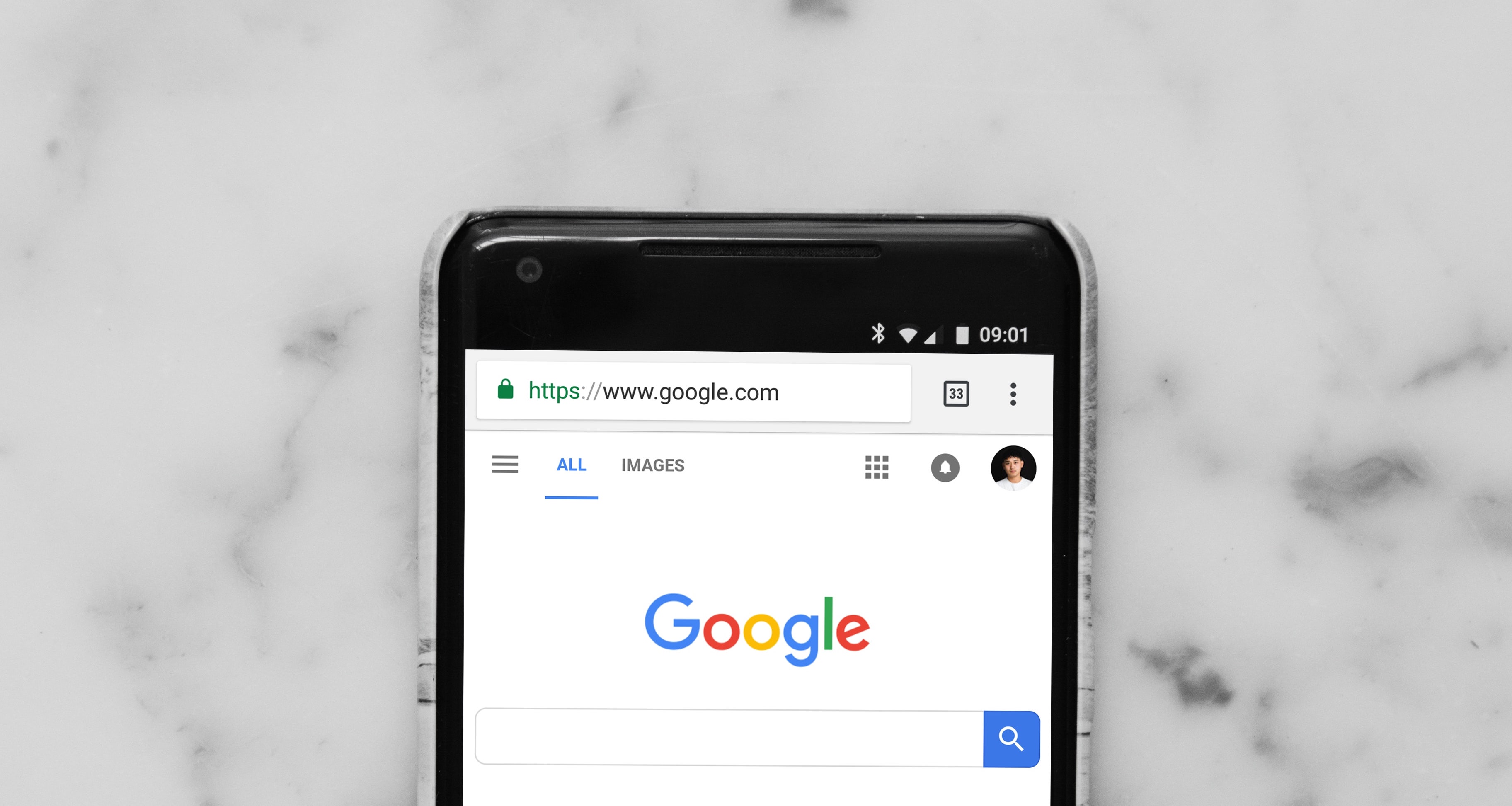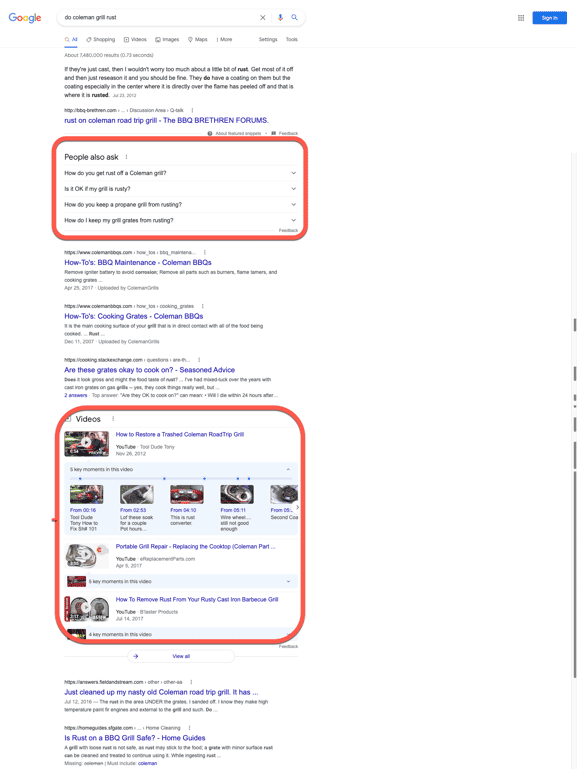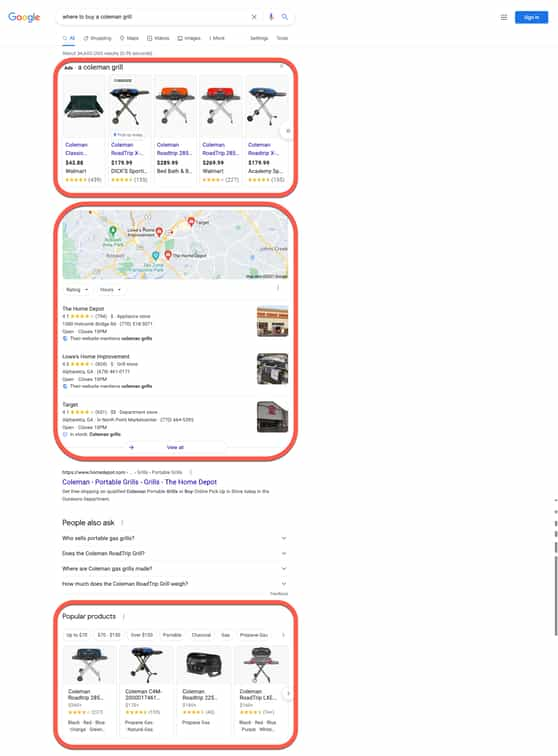How to Build a Content Calendar
Like many New Year’s resolutions, building a marketing content calendar is easy to start, but difficult to maintain. That's because life tends to get...

It's common to see PPC, SEO, and Content Strategy as different projects. In fact, you most likely have different people running each internally or even different agencies tasked with each. However, by addressing these holistically, you increase your chances of strengthening each individually.
As the majority of the buyer’s journey happens online, it’s critical for brands to have content and tools in place to guide them to the right purchase. To support the unique consumer journey of their audience, marketers must try to understand the intent of their audience as they use search and align their PPC, SEO, and content creation efforts in a way that will meet demand and guide them to purchase.
Leveraging search intent is critical to a successful SEO/PPC strategy. Many still take the old approach when it comes to PPC and SEO, which is to build a HUGE keyword list, jam as many of those keywords into your site as possible, and wait for the sales to roll on in. The reason for the shift to search intent is because Google’s algorithm updates continue to change in a way that shows their primary goal to provide immediate value to its users, getting them the best answer quickly vs. rewarding 'keyword stuffing'.
Search intent typically falls into one of three categories:
Understanding which keywords indicate navigational, informational, or transactional intent is critical to the success of a search marketing campaign. Once identified, these keyword groups will help you gain an understanding of the purchase behavior of your audience, allowing you to anticipate content you’ll need to provide them along their journey.
With an understanding of the search intent of your prospects, there are two phases of the consumer decision journey where alignment among your SEO and PPC efforts can pay off the most: evaluation (informational) and purchase (transactional).
To increase your ROI for both PPC and SEO, identify what content is currently ranking among your informational and transactional terms and design your content strategy to create pages, blog posts and other content assets that align with your audience’s search behavior.
Depending on whether Google identifies the search intent as navigational, informational, or transactional, they may display more ad at the top of the SERP, which will lead to lower click-through numbers on organic search results.
If Google identifies a user's search as transactional it assumes they are close to purchasing. With this information, Google will deliver more ads, including sponsored product listings and map packs, within the search results providing PPC advertisers greater exposure – and value – for these searches.

On the other hand, if Google identifies the user's search query as being either navigational or informational Google will provide fewer ads and so your SEO strategy should focus on identifying content needs and develop high-performing online experiences to attract and convert more customers. Note in the screenshot below that they offer alternative search suggestions (i.e. identifying content needs) and featured videos (i.e. high-performing online experiences)

Ensuring your search strategies are working together will maximizing traffic, conversions, and help uncover important data points relating to consumer behavior, intentions, and location/geography. However, there's more to it than just understanding search intent. Your landing pages and content strategy are equally important.
In one of our first meetings with a client of ours, the CMO had said that he didn't understand why their brand had over 1.6 million unique visitors to their website in a given year, but in the same year, only 164,000 products were sold industry-wide.
This situation may sound familiar. How can we have all of this traffic or 'window shopping' but not see an uptick in sales?
After performing some audience research, and reviewing their analytics, we discovered there were 4 or 5 key barriers that were causing visitors to the website to abandon their journey or become overwhelmed. Once we addressed this with content and a site structure that guided users through these barriers, we saw an immediate, and drastic, improvement in their bounce rate, leads, and conversions.
The point here is that SEO is no longer just keywords. You must identify the content needs for your target personas throughout their unique consumer journeys.
What barriers do consumers face when shopping within your category?
What are common questions or concerns that you could address through content?
In your SEO strategy, keywords should dictate the information architecture of a website, as well as its content strategy.
Just because you’re able to track everything doesn’t mean that everything is important. The goal of your marketing team should be to maximize the return on your marketing investment – and don’t forget that your time is part of your investment. The best way to ensure you are protecting this investment is by looking at keyword volume and competition to determine where your efforts will deliver the best ROI.
Your keyword volume shows the average number of times that people have searched for a particular keyword and any variations of that keyword. Knowing this number helps you prioritize which keywords are worth the effort of trying to rank for vs. which keywords get a handful of searches each month.
This number will tell you how many advertisers are vying for each of your target keywords and if that competition is low, medium, or high. Keyword competition is specific to the geographies and audience targets that you have selected.
Ultimately your goal should be to target high volume, low competition keywords that are relevant to your overall marketing strategy. It’s not hard to come up with an exhaustive list of keywords that you’d love to rank for, but it is hard to rank for something meaningful to your customers since anyone associated with your industry is trying to do the same thing.
Choose where to focus your time strategically, and remember that it’s easier to succeed and expand your keyword list vs. trying to target every keyword imaginable with little success.
Leverage PPC (SEM) to ensure your content is present during key moments in the consumer journey, such as when a user is ready to make a purchase decision. It’s vital that you have a clear understanding of the purpose of your PPC efforts or else there’s a good chance you’re wasting time and money:
Thinking through those three separate scenarios, you can already imagine how your keyword list and success metrics would be different. If you’re not currently thinking about your PPC strategy in this way, it may be time for a re-set.
Google rewards user experience, so running PPC campaigns that drive users to a poor experience such as the homepage or a non-relevant content page will not have favorable results. To avoid high bounce rates and enjoy more effective PPC campaigns, you must have relevant landing pages for each of your key search paths.
If you’re spending money on PPC, optimizing your landing pages is the single best tactic for improving your conversion rates.
Great landing pages share some common best practices:
Empathy is a valuable character trait to have when thinking through your SEO, PPC, and content strategy. Put yourself in the seat of someone searching within your category online. When they click a search result and land on your site, will they like what they find? This question is exactly how search engines like Google judge your website every day.
If they do like what they find, are they ready to buy or will they need more information? Chances are they will, and this is where your content strategy comes into play.
If you’re selling candy bars, your content strategy is pretty straight-forward. However, if you are marketing a high-involvement product, something that is either expensive or typically requires research before a purchase, then your content strategy becomes a little more tricky.
Your content should map to your defined consumer decision journey or inbound funnel, and you must identify content needs for each stage. This planning should be done with your audience data in mind, such as demographics, behaviors, interests, etc.
Obviously, your SEO research should influence your planning, but your PPC strategy also plays a role in your content strategy. The goal of your marketing should be to anticipate and address any questions or objections that your audience may have about your brand, products, or services. Your content needs to serve the role of connective tissue between all of your other tactics and channels.
As more people do their shopping online, digital marketing continues to become more complex. To keep up with your audiences’ demand for information, marketers must focus their efforts on understanding search intent, creating content and tools to support the consumer journey, and measure performance holistically.
Keyword data and trends help to provide insights into the topics and content types that are important to consumers. Understanding search intent guides content creation efforts and content types that are engaging and relevant to each particular stage of the journey or funnel.
By aligning your SEO, PPC, and content strategies, marketers can deliver the right content, to the right audience, at the right time without wasting time or money.
Sign up for our monthly newsletter to receive updates.

Like many New Year’s resolutions, building a marketing content calendar is easy to start, but difficult to maintain. That's because life tends to get...

Regardless of your political stance, if you work in marketing, you know that advertising during an election year is a different beast altogether.

Google has made several big updates to how their search algorithm works over the past two years. However, few updates have created as much panic and...